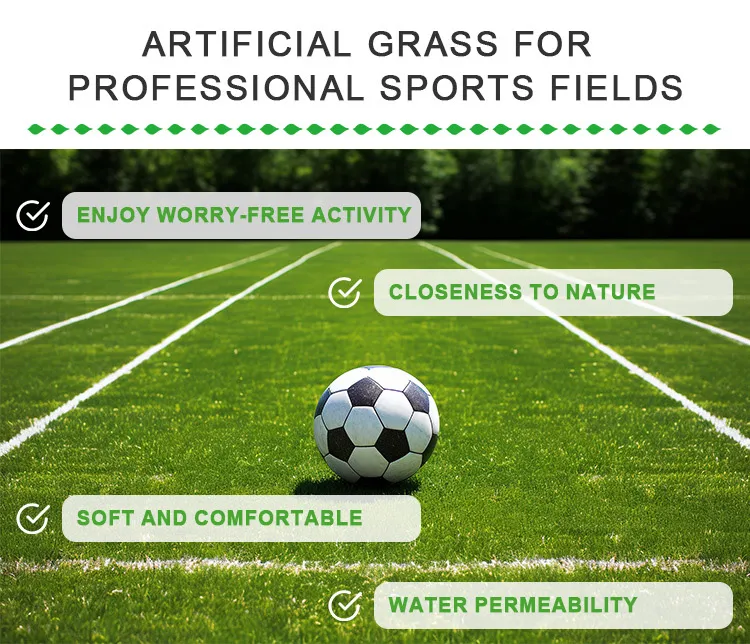Welcome to Hoyarn
Call Us Any Time:+86 19801805999
Email Us: info@hoyarn.cn

- Afrikaans
- Arabic
- Belarusian
- Bengali
- Czech
- Danish
- Dutch
- English
- Esperanto
- Estonian
- Finnish
- French
- German
- Greek
- Hindi
- Hungarian
- Icelandic
- Indonesian
- irish
- Italian
- Japanese
- kazakh
- Rwandese
- Korean
- Kyrgyz
- Lao
- Latin
- Latvian
- Malay
- Mongolian
- Myanmar
- Norwegian
- Persian
- Polish
- Portuguese
- Romanian
- Russian
- Serbian
- Spanish
- Swedish
- Tagalog
- Tajik
- Thai
- Turkish
- Turkmen
- Ukrainian
- Urdu
- Uighur
- Uzbek
- Vietnamese
artificial grass for playgrounds
Mar . 07, 2025 04:01 Back to list
artificial grass for playgrounds
Exploring the suitability of artificial grass for dogs requires careful consideration of multiple aspects, ranging from health safety to practicality. This artificial solution is becoming increasingly popular among dog owners, but its suitability demands a nuanced understanding of its features, benefits, and potential drawbacks.
In terms of installation, artificial grass offers flexibility. It can be laid over various surfaces, be it soil, concrete, or decking, providing lush greenery where natural grass may struggle to grow. For urban dwellers or those with shaded gardens where sunlight is scarce, this is a considerable advantage, offering a manageable solution for dog-friendly areas. Odor management is another point where artificial grass merits attention. Dog urine can lead to an unpleasant smell if not properly addressed. Advanced artificial grass systems now incorporate antimicrobial agents and specialized infill options that help neutralize odors and prevent bacterial growth. Regular maintenance routines, including rinsing the grass with water and using pet-friendly disinfectants, can mitigate any potential smell issues. One of the most reassuring aspects for pet owners is the reduction of pests. Fleas, ticks, and other insects are less attracted to artificial grass, reducing the chances of infestations that can be troubling for dogs. Economic considerations also come into play. While the initial cost of installing artificial grass can be higher than regular turf, the long-term savings on maintenance efforts, water consumption, and lawn treatments could offset the upfront investment, making it a cost-effective solution over time. Overall, artificial grass offers various appealing advantages for dog owners seeking to balance aesthetic considerations with practical benefits. It requires a mindful approach to select the right product and implement proper care routines to ensure its longevity and safety for canine inhabitants. By doing so, artificial grass can serve as a reliable, efficient, and dog-friendly alternative, tailored to fit diverse living environments and satisfy the needs of both pets and their owners.


In terms of installation, artificial grass offers flexibility. It can be laid over various surfaces, be it soil, concrete, or decking, providing lush greenery where natural grass may struggle to grow. For urban dwellers or those with shaded gardens where sunlight is scarce, this is a considerable advantage, offering a manageable solution for dog-friendly areas. Odor management is another point where artificial grass merits attention. Dog urine can lead to an unpleasant smell if not properly addressed. Advanced artificial grass systems now incorporate antimicrobial agents and specialized infill options that help neutralize odors and prevent bacterial growth. Regular maintenance routines, including rinsing the grass with water and using pet-friendly disinfectants, can mitigate any potential smell issues. One of the most reassuring aspects for pet owners is the reduction of pests. Fleas, ticks, and other insects are less attracted to artificial grass, reducing the chances of infestations that can be troubling for dogs. Economic considerations also come into play. While the initial cost of installing artificial grass can be higher than regular turf, the long-term savings on maintenance efforts, water consumption, and lawn treatments could offset the upfront investment, making it a cost-effective solution over time. Overall, artificial grass offers various appealing advantages for dog owners seeking to balance aesthetic considerations with practical benefits. It requires a mindful approach to select the right product and implement proper care routines to ensure its longevity and safety for canine inhabitants. By doing so, artificial grass can serve as a reliable, efficient, and dog-friendly alternative, tailored to fit diverse living environments and satisfy the needs of both pets and their owners.
Prev:
Next:
Latest news
-
The Benefits of Artificial Turf for Indoors
NewsJul.15,2025
-
How Artificial Grass Suppliers Ensure Quality Products
NewsJul.15,2025
-
Artificial Grass and Pets: A Space for Relaxation
NewsJul.08,2025
-
Balcony & Outdoor Decoration with Artificial Grass
NewsJul.08,2025
-
Best Indoor Artificial Grass for Home
NewsJul.07,2025
-
Best Pet Turf for Dogs: Safe & Durable Artificial Grass Options
NewsJul.07,2025
Products categories









